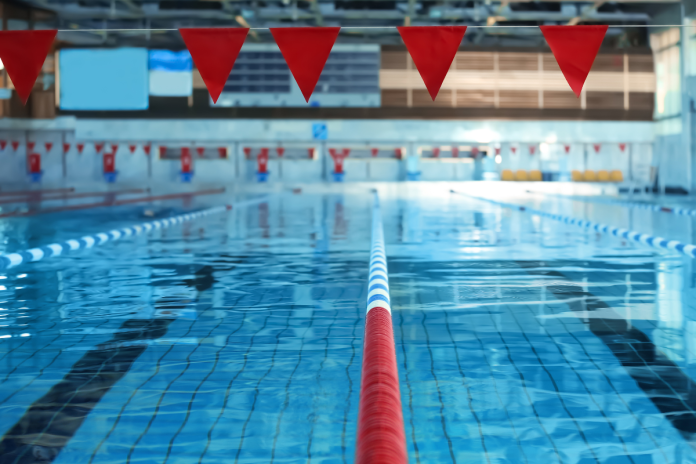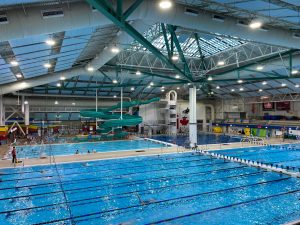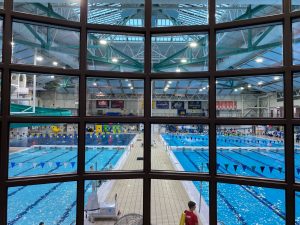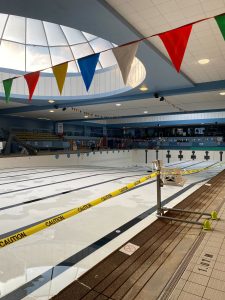
You may not recognize lifeguards as critical front-line workers until it’s too late.
Since the onset of the COVID-19 pandemic, lifeguards in Canada have been hard to find. In fact, reports have shown a massive decline of up to 30-40% compared to pre-pandemic times.
This shortage has not only impacted access to safe swimming and programs resulting in fewer people learning how to swim and increasing the likelihood of injury – but it has also put immense pressure on current lifeguards.

The closure of aquatic facilities and disruptions in training programs caused by the pandemic, the high costs associated with lifeguard certification and various systemic barriers all hinder the recruitment and training of new staff.
In a bold step to address the shortage, the Canadian Parks and Recreation Association (CPRA), in collaboration with the Government of Canada, launched the National Safe Swimming Recovery Program in January of 2024. Through fully subsidized training opportunities, employment placements, and mentorship programs, the National Safe Swimming Recovery Program (NSSRP) now plays a pivotal role in strengthening aquatic safety nationwide.
Program Impact
Since its inception, the NSSRP initiative has provided funding to 64 organizations, with a total investment of $839,650 directed towards youth training and wages. Now, 376 youth between the ages of 15 and 30 have successfully completed lifeguard training and secured employment in aquatic roles across Canada. BC Recreation & Parks Association (BCRPA) supported this initiative as the Regional Manager for Western Canada, overseeing the program’s implementation across British Columbia, Alberta, Saskatchewan, and Manitoba. Across these four provinces, BCRPA engaged with 168 youth across 20 organizations.

One notable participant in the NSSRP included the Island Swimming Club. Through the program, the organization received funding to support the training and employment of 19 youth. This greatly assisted their weekly swimming lesson program expansion, increasing instructional days from four to six per week. Participation grew from 300 to over 550 swimmers, allowing the organization to offer year-round lessons and improve community access to water safety education.
Beyond expanding lesson availability, Island Swimming Club provided employment opportunities for youth facing barriers to workforce entry. Dan Igaz, Manager of Development Programs for Island Swimming, highlighted the program’s positive impact.
“For a lot of these coaches, this is the most responsibility they’ve ever been handed. It’s a lot of pressure. With the extra training they’ve received from the NSSRP, they’re not just facing the pressure – they’re excelling in it. We’re seeing a lot of these youth who are gaining confidence and feeling good about themselves. They’re seeing themselves in a new way, as someone who is able to contribute to the world and to their community in an important and meaningful way. They’re seeing themselves as someone who can really rise to the occasion and make a difference.”
One of the youths who participated said, “During the program, I learned through hands-on experience by assisting and observing qualified coaches. I also had opportunities to apply what I learned by coaching groups myself. Additionally, I gained knowledge through lessons and written materials on coaching strategies and protocols.”
Another youth shared their experience in the program by commenting, “I developed a stronger skill set and made tons of new connections. My people skills have also improved, and I am very grateful for this experience.”
Addressing Aging Infrastructure
In addition to the lifeguard shortage, many communities are grappling with aging aquatic infrastructure that fails to meet their increasing demand.
Across Canada, numerous pool facilities, many of which were built with proceeds from the federal government as part of their Centennial celebrations, require significant repairs to remain operational.

One such example is the City of Victoria’s Crystal Pool & Fitness Centre in BC. Built in 1971, the facility is now outdated and no longer meets the community’s needs. Accessibility challenges and wear and tear have made it difficult to ensure accessibility and inclusion for all.
In 2024, Crystal Pool was forced to close three weeks earlier than scheduled for annual maintenance due to multiple system failures, leading to the cancellation of numerous programs and lessons leaving families and children stranded.
A recent referendum on the issue was held and community members voted in favor of borrowing the necessary funds to construct a new facility. The newly planned Crystal Pool & Wellness Centre will prioritize climate resilience, universal accessibility, and high-quality health and wellness services.
While Victoria has opted to replace its aging aquatic infrastructure, many other municipalities are unable to undertake such projects due to financial constraints, leading to permanent closures of community pools.
Looking Ahead
BCRPA’s recently released Strategic Outlook emphasizes the importance of injury prevention through safe swimming initiatives. To make aquatic education more accessible, BCRPA is looking for ongoing support to build on the success of the NSSRP model. With more funding for subsidized lifeguard training and wage support, BCRPA aims to support local government to improve community safety, support the aquatics industry, and keep aquatic programs running for the long term.
The NSSRP has already helped fill critical workforce shortages and made aquatic education more accessible. To keep communities across Canada safe and ensure everyone has access to swimming programs, ongoing support for initiatives like NSSRP is essential.
About Kirkland Halliday
 As the Senior Program Manager at BCRPA, Kirkland is responsible for overseeing the delivery of the Choose to Move and ActivAge™ programs throughout British Columbia. She organizes program delivery and education development for provincial recreation, parks and fitness programs. Additionally, Kirkland acts as the Regional Manager for the Canadian Parks and Recreation Association, providing support for the National Safe Swimming Recovery Program & Green Jobs initiatives. Drawing on her background coordinating sports, fitness, and education programs, along with her Bachelor’s in Kinesiology and Masters in Management, Kirkland aspires to enhance the health and well-being of BC communities. Outside of work, Kirkland loves experimenting with new recipes, being outdoors, and camping.
As the Senior Program Manager at BCRPA, Kirkland is responsible for overseeing the delivery of the Choose to Move and ActivAge™ programs throughout British Columbia. She organizes program delivery and education development for provincial recreation, parks and fitness programs. Additionally, Kirkland acts as the Regional Manager for the Canadian Parks and Recreation Association, providing support for the National Safe Swimming Recovery Program & Green Jobs initiatives. Drawing on her background coordinating sports, fitness, and education programs, along with her Bachelor’s in Kinesiology and Masters in Management, Kirkland aspires to enhance the health and well-being of BC communities. Outside of work, Kirkland loves experimenting with new recipes, being outdoors, and camping.